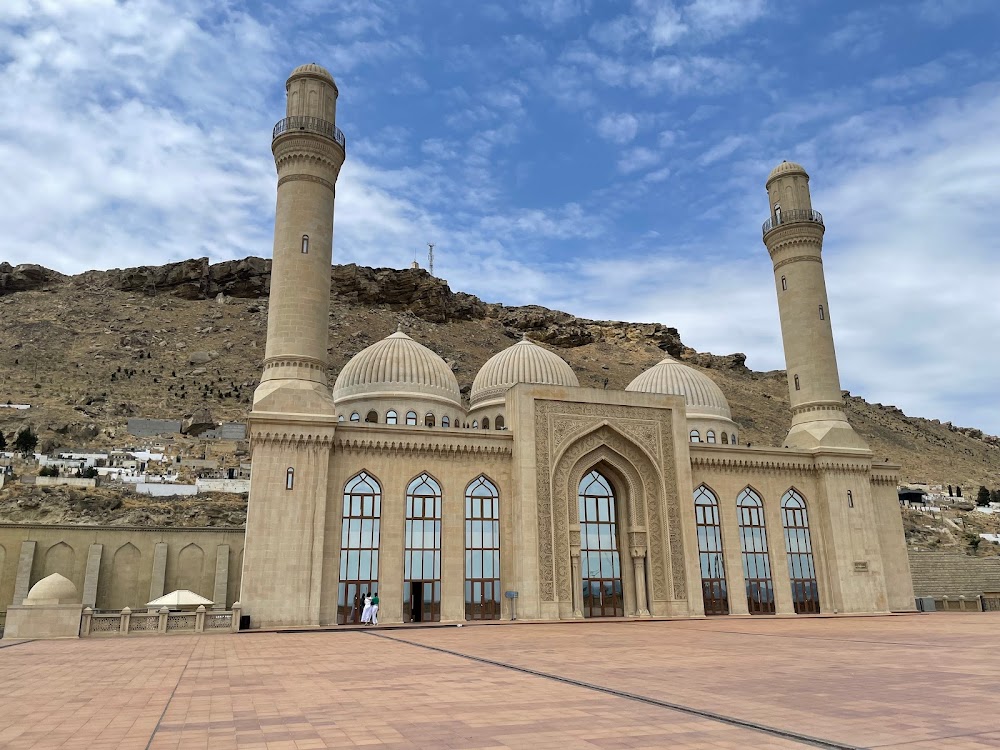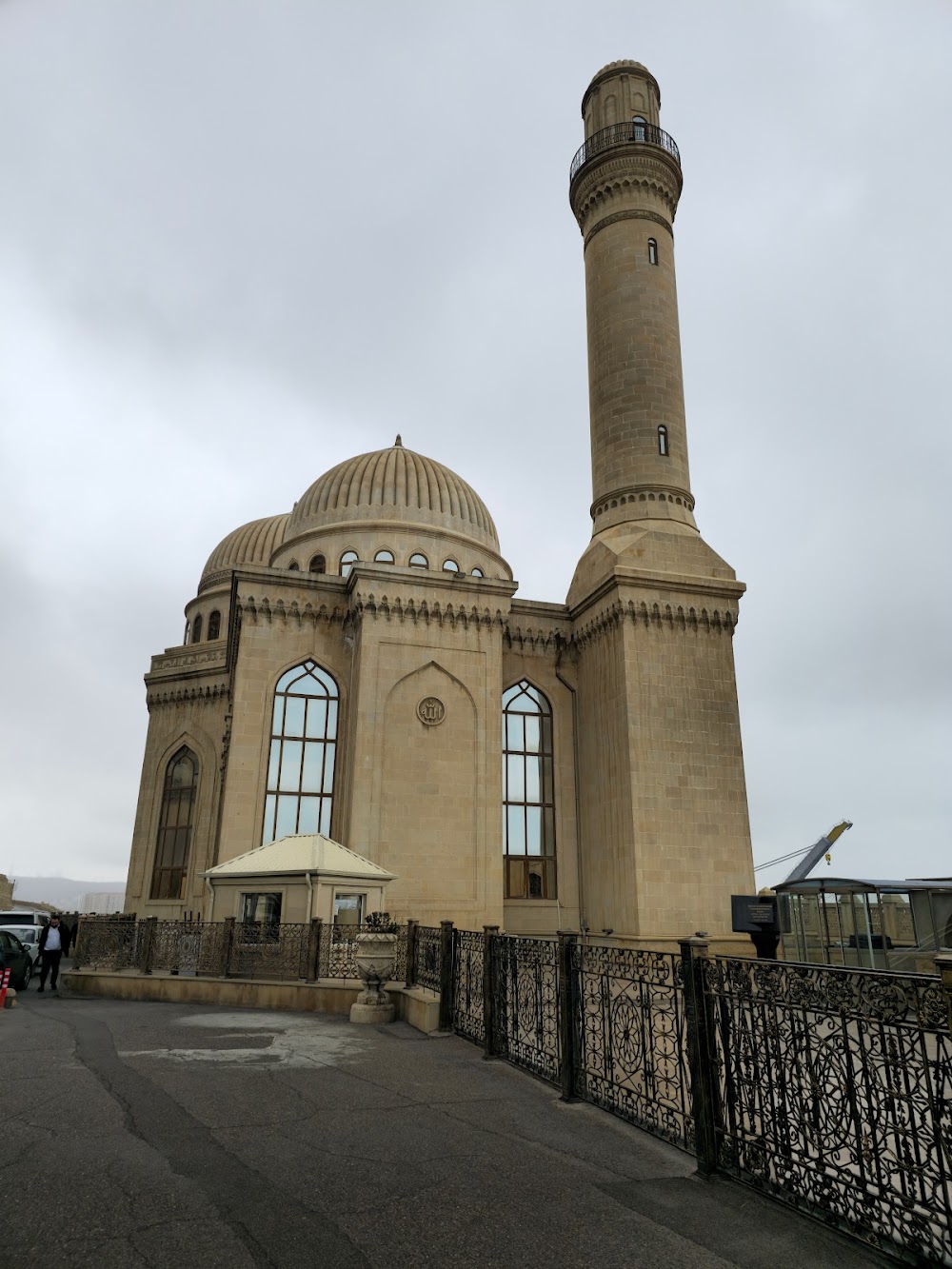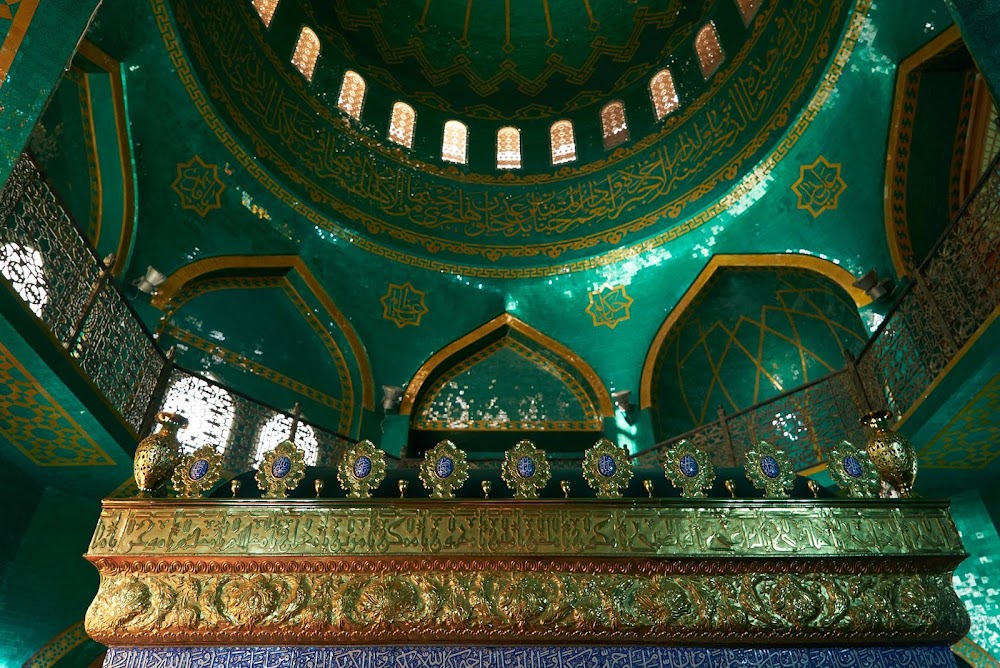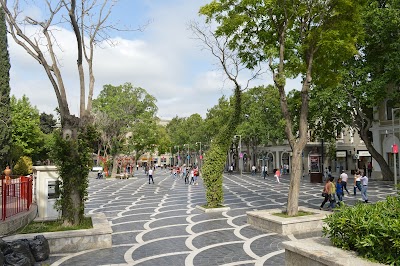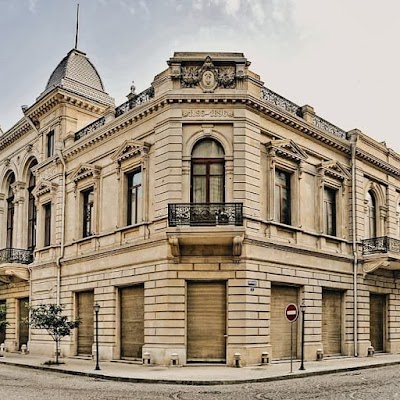Bibi-Heybat Mosque (Bibiheybət Məscidi)
Overview
Bibiheybat Mosque: A Cultural and Architectural Gem
Nestled in the Absheron District of Azerbaijan, the Bibiheybat Mosque is a remarkable symbol of the region's rich cultural and architectural heritage. Its history is a captivating narrative woven with threads of faith, resilience, and the passage of time.
Originally constructed in the 13th century during the reign of the Shirvanshah kingdom, the mosque was commissioned by Shirvanshah Farrukhzad II. Local legend whispers that it was built atop the tomb of a revered woman from the lineage of the Prophet Muhammad, which is how the mosque came to be known as Bibiheybat, meaning "Holy Lady."
This majestic structure showcased classic Islamic architectural styles, with its grand minaret, expansive prayer hall, and intricate stonework reflecting the exceptional craftsmanship of the era. Visitors of the time would have been awed by the mosque's beauty and spiritual significance.
However, tragedy struck in 1936 during the Soviet regime, which sought to suppress religious practices. In a devastating turn of events, the Bibiheybat Mosque was demolished, leaving only its sacred graves hidden beneath layers of neglect for many decades.
Fortunately, the story of Bibiheybat Mosque did not conclude in despair. Following Azerbaijan's independence from the Soviet Union in 1991, the people yearned to reclaim their cultural and religious heritage. Recognizing the mosque's profound historical and spiritual importance, the government initiated a significant reconstruction project.
The new Bibiheybat Mosque was meticulously rebuilt between 1997 and 1999, under the guidance of Azerbaijani President Heydar Aliyev. The aim was not only to restore the mosque to its former glory but also to integrate modern building techniques to ensure its durability for future generations.
The reconstruction adhered closely to the original medieval architecture, featuring three domes and two minarets that resonate with traditional Islamic design. Skilled artisans and historians collaborated to capture the mosque's historical essence, resulting in a harmonious blend of past and present.
The mosque is now adorned with ornate calligraphy, stunning tile work, and intricate geometric patterns, which beautifully merge medieval design with contemporary artistry. Inside, lavish chandeliers and hand-woven carpets create a serene atmosphere, perfect for contemplation and worship.
Upon its completion, the Bibiheybat Mosque transcended its role as a mere place of worship; it emerged as a powerful symbol of resilience and cultural revival. Today, it stands as a poignant reminder of Azerbaijan's historical lineage, reflecting a nation that honors its past while embracing the future.
In contemporary times, the Bibiheybat Mosque attracts a diverse array of visitors. Pilgrims from around the globe come to pay their respects at the tombs of revered figures interred there, while tourists are drawn to the mosque's architectural splendor and historical significance.
Moreover, the mosque serves as a spiritual hub for locals, especially during significant Islamic holidays such as Ramadan and Eid. Its role extends beyond religious observance, as it hosts educational programs, sermons, and community gatherings, reinforcing its importance in daily life and local culture.
In essence, the Bibiheybat Mosque is not just an architectural marvel; it embodies the perseverance of faith and the enduring spirit of the Azerbaijani people. From its initial construction during the Shirvanshah reign to its destruction in the Soviet era and its modern reconstruction, the mosque's story is a profound testament to resilience and renewal.



